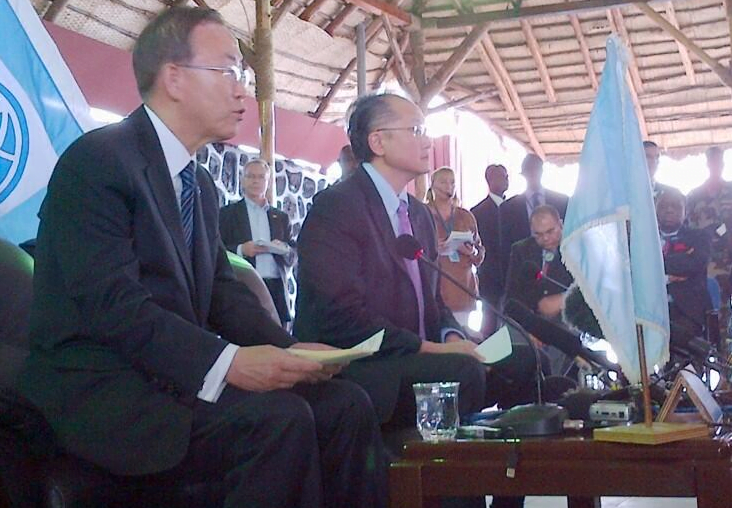Bukavu, South Kivu, DRC — UN Secretary General Ban Ki Moon arrived in Kinshasa, the capital of the Democratic Republic of Congo (DRC), yesterday. It was a visit planned as part of a UN brokered framework agreement between the Congolese government and rebels in the eastern part of the country, though it coincided with fresh clashes between them. This is the first significant fighting since the rebel movement, known as M23, took and then withdrew from the provincial capital of North Kivu, Goma, in late 2012.
M23 insists that the government instigated the renewed fighting, though other reports indicate that M23 attacked government positions first. Allegations have surfaced that the government is collaborating with another militia, the FDLR, in its opposition to them. The renewed clashes also coincide with the deployment of an intervention brigade of some 3,000 authorized by the UN, the first of its kind in that it has an offensive mandate to “neutralize” rebel militias. This includes the M23, but also other militias such as the various Mai Mai “local defense” groups active in eastern Congo.
If the Congolese government really is aligning itself with the FDLR, a Congolese militia (but also a social and political movement) opposed to the regime of President Kagame in neighboring Rwanda and with roots in the aftermath of the 1994 genocide in that country, it poses serious problems for MONUSCO, the UN peacekeeping mission in DRC. It would not, especially in 2013, be accurate to categorize the FDLR as exclusively anti-Tutsi genocidaires or the M23 as exclusively anti-Hutu Kagame supporters. Generally speaking, though, the two camps are in political opposition to each other within the context of local power struggles in eastern Congo, and both are non-state militia movements that are theoretically subject to being “neutralized” by the intervention force. The Congolese government has a history of switching allegiances and playing upon differences between these groups. At the same time, the deployment of the intervention brigade does appear to be primarily in response to the M23 movement, even if its mandate refers more vaguely to rebel groups in general.
The role of MONUSCO has become increasingly controversial over the past few years over its perceived inability to protect civilians and to stop rebels from taking Goma in November 2012. The renewed fighting of the past few days indicates that the aggressive mandate of the brigade, which has been deployed to support MONUSCO and which M23 has declared an act of war by the UN, has further politicized the mission’s presence in the country. The renewed fighting also suggests that M23 feels particularly targeted by the brigade’s deployment, while the government feels particularly emboldened by it.
Reports circulated on Wednesday that the government army attacked a camp for internally displaced persons near Goma. This has played well for M23, whose supporters quickly spread the word on Twitter.
The M23 movement was born in April 2012 when Congolese troops, former CNDP rebels that had been integrated into the national army in 2009, mutinied. They claimed that the government did not live up to their end of the March 23, 2009 agreement under which they were integrated into the army. The UN Group of Experts on DRC and human rights watchdogs such as Human Rights Watch believe M23 to be supported by the Rwandan military.
On Thursday morning, M23 announced a ceasefire ahead of Secretary General Ban’s visit to Goma.
This shows the potential positive influence such high level diplomatic involvement can have. Whether you think this is just a PR move on the part of M23 or a genuine sign of goodwill, they still declared a ceasefire. This could be a good time for Ban to use that influence to get the government and rebels talking again; though the deployment of the intervention brigade, with its aggressive mandate, could actually complicate such an effort.
